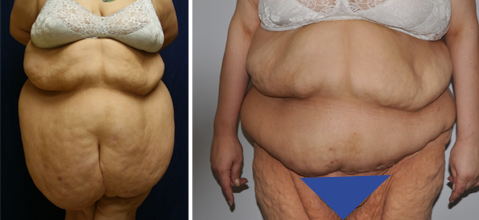Insurance may cover skin removal after weight loss, but it depends on your policy. Coverage varies and is often based on medical necessity.
Losing a significant amount of weight is a great achievement. But it can leave behind excess skin that many people want to remove. This is where the question arises: Does insurance pay for skin removal after weight loss? The answer is not straightforward.
It often depends on whether the procedure is deemed medically necessary. Understanding the criteria and processes can help you navigate this complex issue. Let’s explore the factors that influence insurance coverage for skin removal surgery after weight loss.
Insurance Coverage Basics
Insurance may cover skin removal surgery. It depends on the medical need. Excess skin can cause rashes and infections. Doctors must prove this to the insurance company. Medical records and photos help show the need. Each insurance plan is different. Check with your provider to see if you have coverage.
Insurance often does not pay for skin removal for cosmetic reasons. If the skin is not causing health problems, it may not be covered. Loose skin after weight loss might not be enough. Insurance companies see this as a personal choice. Elective surgeries are usually not covered. Always review your policy details to understand what is included.

Credit: uthealtheasttexasdoctors.com
Eligibility Criteria
Insurance may cover skin removal if it is a medical necessity. Skin infections, rashes, and limited movement can be reasons. A doctor must confirm these issues.
Most insurance plans need proof of significant weight loss. This often means losing 100 pounds or more. The weight must be stable for at least six months.
Types Of Skin Removal Surgeries
A panniculectomy removes excess skin and fat from the lower belly. This surgery is common after major weight loss. It improves comfort and hygiene. The panniculectomy does not tighten muscles. It’s not the same as a tummy tuck. Insurance may cover it if it’s medically needed.
An abdominoplasty, also known as a tummy tuck, removes excess skin and fat. This procedure also tightens muscles. It helps achieve a firmer abdomen. Some people choose it for cosmetic reasons. It may not always be covered by insurance. Always check with your provider.
Documentation Needed
Insurance coverage for skin removal after weight loss often requires extensive documentation. This may include medical records, photos, and letters from doctors.
Doctor’s Letter
A letter from your doctor is very important. This letter should state why you need the surgery. It must explain the health problems caused by extra skin. The doctor should mention any infections or pain.
Medical Records
Medical records are also needed. These records should show your weight loss journey. They must include your starting weight and your current weight. Records of visits to other doctors can help too. They should show you tried other treatments. This can prove you need the surgery.
Appealing A Denial
Insurance may deny skin removal surgery for many reasons. They might say it is not medically necessary. They could view it as a cosmetic procedure. Insurers often have strict rules about what they cover. Sometimes, they think the surgery is too risky. They might not see enough proof of medical need. Many times, documentation is not enough. The surgeon’s notes might not be clear. Sometimes, photos are not detailed. These reasons can be frustrating. But, you can appeal their decision.
First, read the denial letter carefully. Understand the insurer’s reason. Collect all your medical records. Get a letter from your doctor. Show why the surgery is necessary. Include photos that show your condition. Write a personal letter. Explain how the excess skin affects your life. Be polite and clear. Submit all documents on time. Follow up with the insurance company. Keep records of all communications. If needed, ask for help from a patient advocate. Don’t give up. Many appeals are successful.

Credit: goalbmi.com
Cost Of Skin Removal Surgery
Skin removal surgery can be expensive. Out-of-pocket costs include surgeon’s fees, anesthesia, and hospital charges. Prices range from $5,000 to $10,000 or more. Insurance may not cover all expenses. Consult your provider for details.
Many clinics offer payment plans. Some options include medical credit cards and personal loans. These can help spread the cost over time. Check interest rates and terms before choosing. Save up or use a savings account if possible.
Finding A Qualified Surgeon
Choose a surgeon with board certification. This ensures they have proper training and skills. Certified surgeons follow high standards. They know the latest techniques. This is important for safe and effective surgery.
Surgeons with experience in post-weight loss patients understand unique challenges. They know how to handle excess skin. They can provide better results. Ask about their past surgeries. Look for before and after photos. This helps to see their work quality.

Credit: drjasonhall.com
Preparing For Surgery
Insurance coverage for skin removal after weight loss varies. Often, it depends on the medical necessity. Consulting your provider is crucial.
Pre-surgery Consultations
Doctors will meet with you before surgery. These are called consultations. They will check your health. They will make sure you are ready for surgery. You can ask questions during these meetings. It is important to feel comfortable with your doctor. They will explain the risks of surgery. They will also talk about the benefits. Make sure to share your medical history. This helps the doctor plan your surgery. You might need some tests before the surgery. These tests will ensure you are healthy enough for surgery. Discuss your expectations with the doctor. It is important to have realistic goals.
Recovery Plan
After surgery, you will need time to heal. Your doctor will give you a recovery plan. Follow this plan closely. It will help you recover faster. Rest is very important after surgery. Avoid heavy lifting and exercise. You may need help at home. Ask a friend or family member. Follow all instructions from your doctor. This includes taking medicine. It helps with pain and prevents infections. Attend all follow-up appointments. The doctor will check your healing. They can answer any questions you have. Take care of your skin. Keep the area clean and dry. This helps prevent infections.
Frequently Asked Questions
Does Insurance Cover Skin Removal Surgery?
Insurance may cover skin removal surgery if it’s deemed medically necessary. Policies vary, so consult your provider.
What Criteria Must Be Met For Insurance To Pay?
Insurance usually requires proof of medical necessity, such as infections or rashes caused by excess skin.
Is Skin Removal Surgery After Weight Loss Common?
Yes, many people seek skin removal surgery after significant weight loss to improve comfort and appearance.
How Do I Prove Medical Necessity For Surgery?
Consult your doctor for documentation and evidence of health issues caused by excess skin, like infections.
Conclusion
Understanding whether insurance covers skin removal after weight loss can be complex. Coverage depends on many factors. Medical necessity is crucial. Each insurance plan varies. Consult your provider for specifics. Document your medical conditions. This strengthens your case for coverage.
Also, discuss options with your doctor. They can offer valuable insights. Research and preparation are key. Stay informed and proactive. This will help in achieving your goals.


